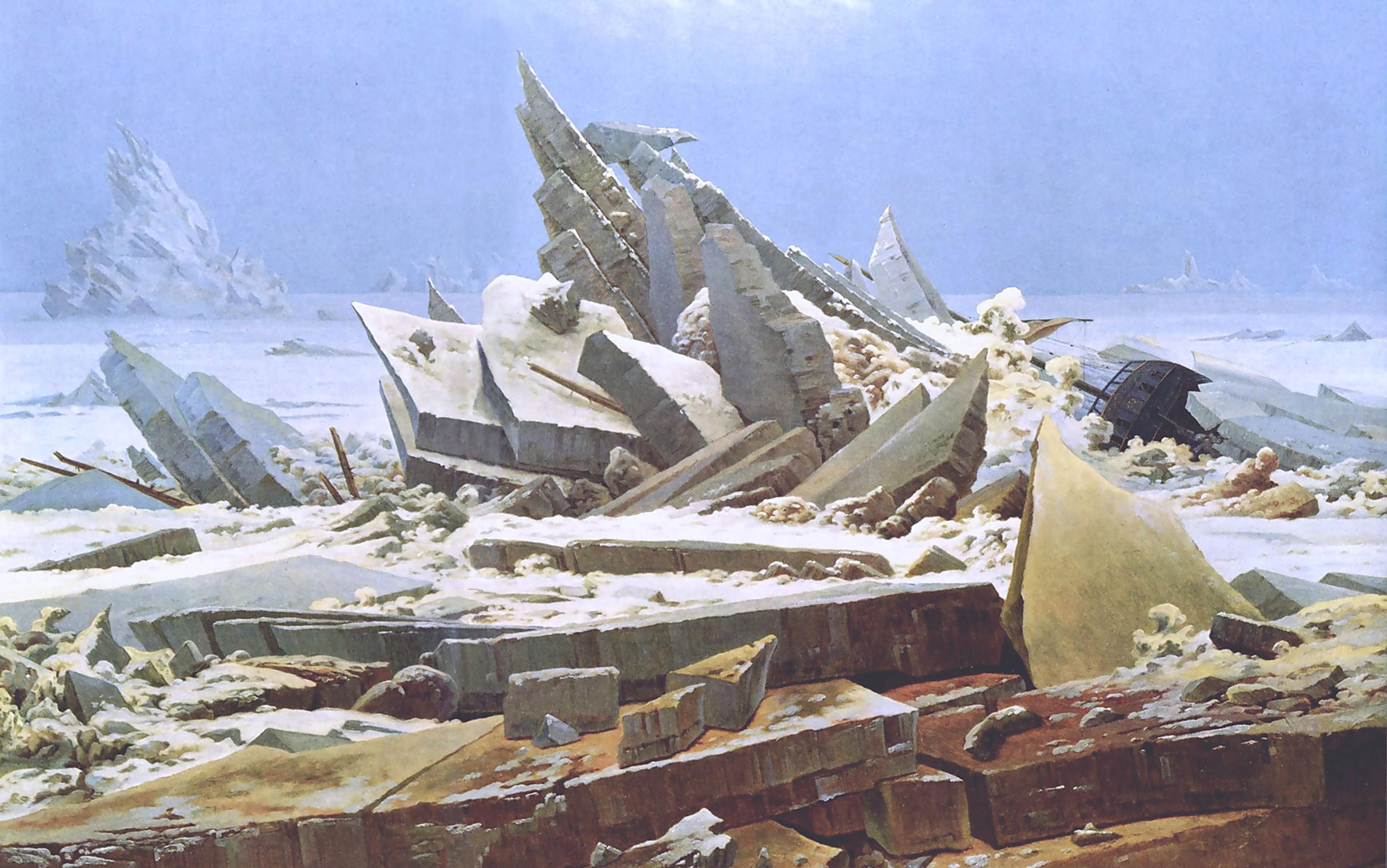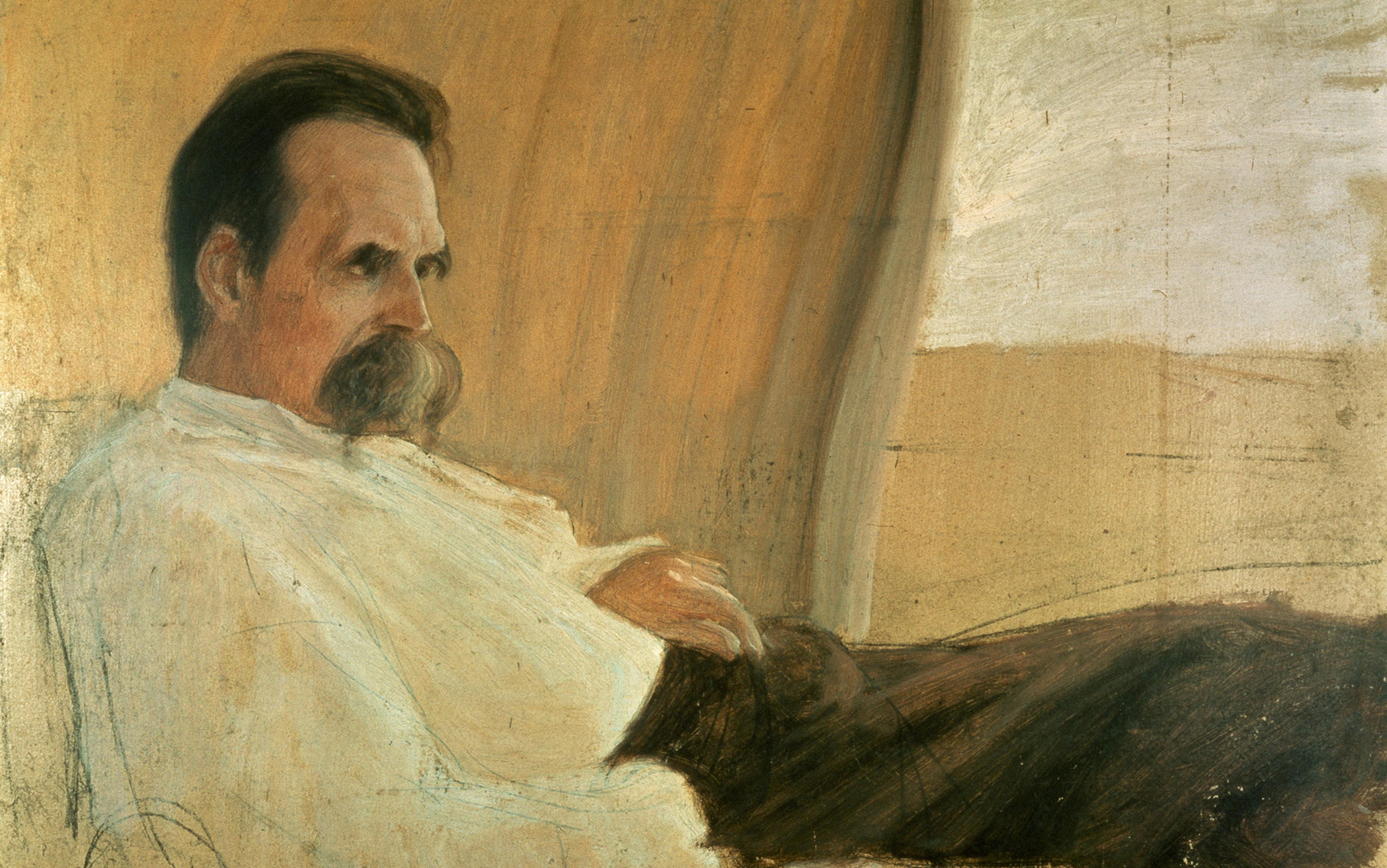A typical university course in the history of philosophy surveys the great thinkers of Western civilisation as a stately procession from Plato to Aristotle to Descartes to Kant to Hegel to Nietzsche. These magnificent intellects offer their ideas in weighty philosophical tomes, stuffed with chiselled definitions, well-reasoned arguments and sustained critiques. In turn, instructors present the grand narrative of ideas to a new generation of students.
Immanuel Kant typifies this magisterial approach. In the closing pages of his Critique of Pure Reason (1781), the German philosopher narrates the history of Western philosophy from Plato to Aristotle to Locke to Leibniz to himself as a series of attempts to construct systems. Indeed, he is nothing if not a scrupulous architect of thought:
By an architectonic I mean the art of systems. Since systematic unity is what first turns common cognition into science.
That is, science turns what is a mere aggregate of random thoughts into something coherent. Only then can philosophy become a doctrine or method of judgment of what is knowledge and what is not. No systems, no real philosophy.
But might there be more things in heaven and earth than are dreamt of in Kant’s philosophy? What happens when we consider the history of philosophy not from the point of system-building, but through an alternative account that pays attention to the fragments of thinking?
Consider Heraclitus’ ‘Nature loves to hide’; Blaise Pascal’s ‘The eternal silence of these infinite spaces terrifies me’; or Friedrich Nietzsche’s ‘If a temple is to be erected, a temple must be destroyed.’ Heraclitus comes before and against Plato and Aristotle, Pascal after and against René Descartes, Nietzsche after and against Kant and G W F Hegel. Might the history of thought be actually driven by aphorism?
Much of the history of Western philosophy can be narrated as a series of attempts to construct systems. Conversely, much of the history of aphorisms can be narrated as an animadversion, a turning away from such grand systems through the construction of literary fragments. The philosopher creates and critiques continuous lines of argument; the aphorist, on the other hand, composes scattered lines of intuition. One moves in a chain of logic; the other by leaps and bounds.
Before the birth of Western philosophy proper, there was the aphorism. In ancient Greece, the short sayings of Anaximander, Xenophanes, Parmenides or Heraclitus constitute the first efforts at speculative thinking, but they are also something to which Plato and Aristotle are hostile. Their enigmatic pronouncements elude discursive analysis. They refuse to be corralled into systematic order. No one would deny that their pithy statements might be wise; but Plato and Aristotle were ambivalent about them. They have no rigour at all – they are just the scattered utterances of clever men.
Here is Plato’s critique of Heraclitus:
If you ask any one of them a question, he will pull out some little enigmatic phrase from his quiver and shoot it off at you; and if you try to make him give an account of what he has said, you will only get hit by another, full of strange turns of language.
For Plato, the Heracliteans’ stratagem of continual evasion is a problem because they constantly produce new aphorisms in order to subvert closure. In this sense, Heraclitus is opposed to Plato in at least two fundamental ways: first, his doctrine of flux is contrary to the theory of Forms; and second, the impression one gets is that his thinking is solitary, monologic, misanthropic, whereas Plato is always social, dialogic, inviting.
Plato’s repudiation of his predecessor’s gnomic style signals an important stage in the development of ancient philosophy: the transition from oracular enunciation to argumentative discourse, obscurity to clarity, and thus the marginalisation of the aphoristic style in favour of sustained logical arguments. From Socrates onward, there would simply be no philosophy without proof or argument.
Yet I think it is possible to defend Heraclitus against Plato’s attack. Perplexity arising from enigmatic sayings need not necessarily lead one to seizures of thinking. On the contrary, it can catalyse productive inquiry. Take this well-known saying:
Nature loves to hide.
[or]
A nature tends to hide.
These words have invited much commentary. What is ‘nature’? What is ‘hiding’? What is ‘love’? The French philosopher Pierre Hadot in The Veil of Isis (2004) suggests that there are at least five interpretations: the true meaning of something is hard to know; its meaning wants to be hidden; nature is origins, and it is hard to retrace; death follows birth; and, finally, appearances deceive. The nature of Heraclitus himself – and the nature of language in general – loves to hide. As such, we can claim two corollaries: ‘Aphorisms too love to hide,’ and ‘Interpretation loves to illuminate.’
The nature of Heraclitus’ microform is true for the aphorism in general. The aphorism both resists and invites fuller articulations, and so hermeneutics – a conduit between the text and the reader – is demanded from every reader. Fragments are both antithetical and propaedeutic to argumentative philosophy: antithetical because they are too enigmatic; and propaedeutic because they cannot but prompt us to think about the origins and nature of things.
Good aphorisms demand to be interpreted. And in their interpretation is an invitation for the readers to engage in their own philosophical enterprise – to do philosophy themselves. Aphorisms, then, are at once before, against and after philosophy.
All finite things are fragments, for they are nothing but pieces torn from infinity
In the 17th century, Descartes inaugurated modern philosophy by offering rules and directions for clear thinking. Yet a few decades later, Pascal offered a powerful corrective. Perhaps, he wagered, order is overrated. By all accounts, Pascal was a genius of his time. At a young age, he made landmark contributions to geometry and algebra. Plagued by ill health, he had a religious conversion in his late 20s, and spent the last 10 years of his short life in vain attempts to construct a justification of Christianity intended as an ‘Apology for Religion’, published posthumously as the Pensées (1670).
Pascal’s lifelong task became an exercise of endlessly reducing words to their essence, in order to probe a pure nothingness and bring us to its edge. For him, all finite things are fragments, for they are nothing but pieces torn from infinity. All the same, the nature of finitude is such that not even a vast quantity of fragments could ever approach wholeness, ‘a unit added to infinity does not increase infinity at all, any more than a foot added to an infinite length’. The Pascalian lack of order is an acknowledgment of the failure of the human intellect to understand such infinity. As such, the Pensées operate within a poetics of the fragment.
When Pascal died in 1662, there were more than 800 slips of paper in various stages of disorder. These fragments are, in a large part, a direct consequence of his rejection of the Cartesian insistence on order and clarity. The saying ‘The heart has its reasons of which reason does not know’ is one clear case. Pascal’s principal criticism is that Descartes reduces philosophy to an all-too-rational system. For Pascal, the proposition ‘I think, therefore I am’ rests on shaky grounds, for this self that Descartes posits to be the foundation of all reasoning is but an impoverished thing. This is Pascal’s view of the human condition:
What a monster, what chaos … weak earthworm; repository of truth, and sewer of uncertainty and error; the glory and garbage of the universe!
The glorious heap that makes up the Pensées might then be conceived of as a monumental rejection to Cartesian reason’s supreme confidence in itself.
The dialectic between aphorisms and philosophy reaches its apex in 19th-century Germany. After Kant, thinkers as varied as Friedrich Schlegel, Arthur Schopenhauer, Søren Kierkegaard and Nietzsche all used the microform to grapple with how to do philosophy after systems. The Romantics loved ruins, the unfinished, shadows. Think of Caspar David Friedrich’s landscapes, Franz Schubert’s Unfinished Symphony, or the obsession with classical antiquity. This cult of the fragment is a response to Kant’s relentless system-building. Confronted with how to adequately represent the unity of transcendental knowledge, the Romantics insist that the only possible way of doing so is in parts. Thus, aphoristic thinking : systematic thinking :: the micro : the macro.
In a series of dazzling essays, reviews, dialogues and manifestos published over just three years – 1798 to 1800 – the German journal Das Athenaeum established Romanticism as a unified aesthetic reaction and a viable philosophical alternative to idealism. On one hand, as an Athenaeum fragment holds, ‘all individuals are systems, at least in embryo and tendency’. On the other, ‘a dialogue is a chain or garland of fragments’. Hence, ‘it’s equally fatal for the mind to have a system and to have none. It will simply have to decide to combine the two.’
Nietzsche is a late descendant of this Romantic strain of thought. In Twilight of the Idols (1889), he declares:
I mistrust all systematisers and avoid them. The will to a system is a lack of integrity … The aphorism, the apothegm, in which I am the first master among Germans, are the forms of ‘eternity’; my ambition is to say in 10 sentences what everyone else says in a book – what everyone else does not say in a book.
Nietzsche’s life began as a classicist collecting the fragments of early Greek philosophers. So formidable was his erudition that, in 1869, it earned him a full professorship of Greek philology at the University of Basel at the age of 24.

The Ploughshare Notebook by Friedrich Nietzsche contains 176 aphorisms set down in 1876. Courtesy Bibliotheque Nationale, Paris/Nietzschesource.org
His philology on fragments became a philosophy of fragments when he abandoned his profession as a classicist in the late 1870s. Rather than just studying aphorisms, he started producing them. In the most fertile stretch of his life, from Human, All Too Human (1878) to Ecce Homo (1888), he composed thousands upon thousands of pithy sayings and maxims. The fragmentary form became the preferred style for the rest of his life. The prophet in Thus Spoke Zarathustra (1883-85) speaks in enigmatic dithyrambs reminiscent of the wisdom literature of antiquity.
Intense, difficult maxims strike at the heart of readers, destabilising their habits of thought
Nietzsche’s aphoristic form becomes his way of training his readers not to subscribe to a doctrine or a particular Nietzschean view of life, but rather to create and craft their own philosophy of life. He writes that ‘in books of aphorisms like mine there are plenty of forbidden, long things and chains of thoughts between and behind short aphorisms’. What this means is that Nietzsche will not spoon-feed his readers. His method is like Heraclitus’ – intense, difficult, aporetic maxims and arrows that strike at the heart of readers, seizing or destabilising their habits of thought. They are required to do much work, to investigate what is ‘between and behind’ his sharp words. Here is one such piercing insight:
We have already grown beyond whatever we have words for; in all talking there lies a grain of contempt … The speaker has already vulgarised himself by speaking.
Nietzsche here forces us to think about the tenuous continuity between inner thoughts, speech and writing. The production of thought – the movement from ideas in our minds to ideas expressed in writing – is never seamless; there is always a fidelity problem of transmission. Our inmost thoughts cannot be captured in any language: the true aphorism is beyond words. In Schlegel’s elegant formulation:
A fragment ought to be entirely isolated from the surrounding world like a little work of art and complete in itself like a hedgehog.
It is no accident that, when Schlegel compares an aphorism to a hedgehog (ein Igel), the most famous hedgehog in Western thought comes from a fragment of Archilochus that Isaiah Berlin later popularised:
The fox knows many things, but the hedgehog knows one big thing.
Though an aphorism by definition is succinct, it almost always proliferates into an innumerable series of iterations. By nature, the aphorism – like the hedgehog – is a solitary animal. Striving to cut out all verbiage, its not-so-secret wish is to annihilate its neighbour so that its singular potency would reign supreme.
Yet aphorisms also have a herd mentality. From the wisdom literature of the Sumerians and Egyptians onward, they find strength in the social collective of anthologies. Each aphorism might very well be ‘complete in itself’, as Schlegel claims, but it also forms a node in a network, often a transnational one with great longevity, capable of continuous expansion. And the best modern aphorists never wrote just one aphorism, but almost always a great many: François de La Rochefoucauld, Johann Wolfgang von Goethe, Georg Christoph Lichtenberg, Pascal and Nietzsche himself had notebooks upon notebooks filled with them, and often had trouble finishing them.
So while a single aphorism might be a hegemonic hedgehog, a collection of aphorisms morphs into a multitude of cunning little foxes.
Etymologically, ‘aphorism’ is composed of the Greek apo- ‘from, away from’ + horizein ‘to bound’. A horizon is defined by Merriam-Webster’s dictionary as:
a: the apparent junction of Earth and sky;
b: the great circle on the celestial sphere formed by the intersection of the celestial sphere with a plane tangent to the Earth’s surface at an observer’s position.
It is impossible to ever arrive at the horizon; it is infinitely receding, both immanent and imminent. Ever transcendent, as a line it is without beginning or end, cutting the visible and invisible.
Is not a well-wrought aphorism precisely that which walks, leaps, climbs, and dances?
An aphorism makes a definitive statement, sets boundaries, establishes property. Yet any good definition is aware of its own limits, what is within and without. To define anything, after all, is to delimit it. The curvature of the globe, like the shape of thinking, means that there is always a limit to our field of vision. An aphorism, in this sense, is a mark of our finitude, ever approaching the receding horizon. Beyond the horizon of language, thinking can go no further.
In times of great difficulty, we might not have the powers of concentration to read weighty tomes – even Either/Or (1843), the magnum opus of Kierkegaard, that great philosopher of fragments, runs to two volumes totalling 1,200 pages in the Princeton University Press translation. Hegel’s The Phenomenology of the Spirit (1807) is 600 pages; Plato’s Republic is 500; Kant’s three Critiques (1781; 1788; 1790) add up to some 2,400. Michel Foucault also wrote big books – Madness and Civilization (1961), The Birth of the Clinic (1963), Discipline and Punish (1975), The Order of Things (1966) and The Archaeology of Knowledge (1969), among others. Toward the end of this life, Foucault reflected on a more modest genre of writing in antiquity called ‘hupomnemata’, the sayings of the Stoics, the Epicureans, Jesus. In ‘Self Writing’ (1983), Foucault said:
In this period there was a culture of what could be called ‘personal writing’: taking notes on the readings, conversations, and reflections that one hears or has or does; keeping notebooks of one sort or another on important subjects (what the Greeks call hupomnemata), which must be reread from time to time so as to reactualise what they contain …
To practise self-care, then, is to think about aphorisms and to think aphoristically.
In The Gay Science (1887), Nietzsche wrote that:
We do not belong to those who have ideas only among books, when stimulated by books. It is our habit to think outdoors – walking, leaping, climbing, dancing, preferably on lonely mountains or near the sea where even the trails become thoughtful.
In these days of COVID-19 lockdowns, many of us are housebound. Is not a well-wrought aphorism, supple and limber, precisely that which walks, leaps, climbs, and dances? Perhaps by reading more aphorisms, and composing some of our own, we can improve our art of living in these dark times. After all, who can really read Hegel outdoors anyway?
A Theory of the Aphorism (2019) by Andrew Hui is published by Princeton University Press.






